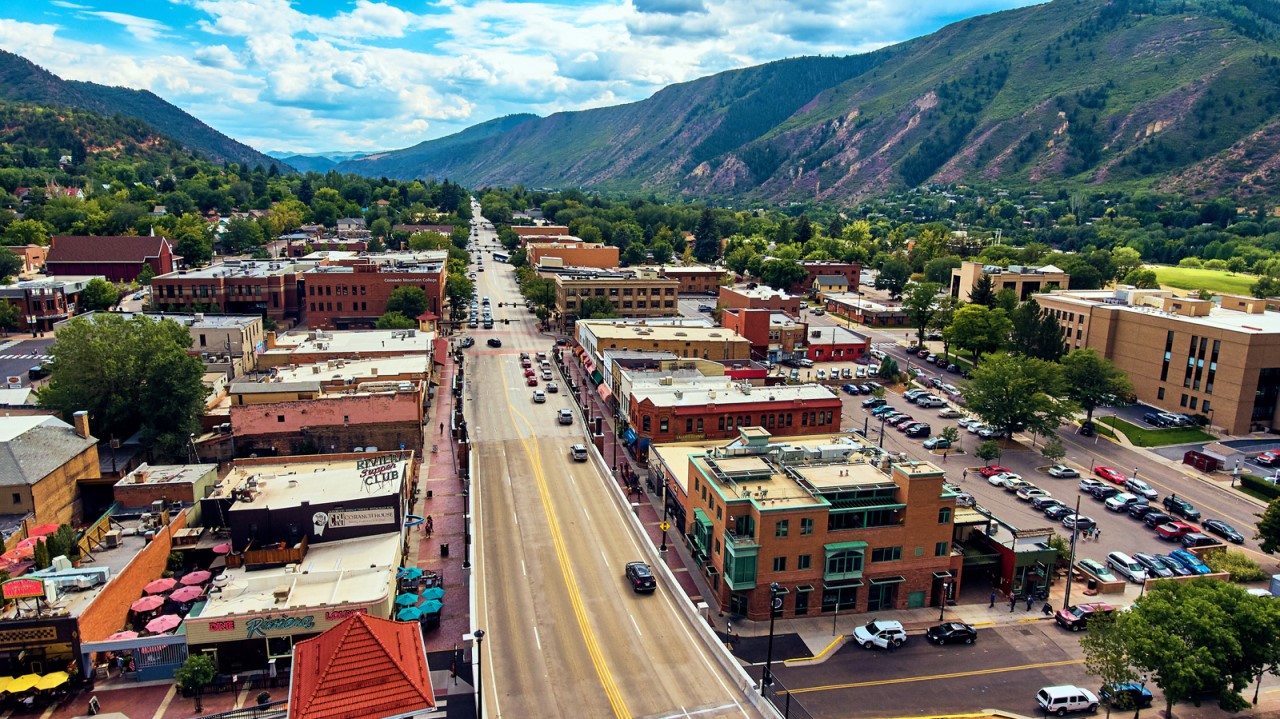
Ribbon cuttings. We all live for that moment when the project comes together, the last brick is neatly put in place, and we can look at our residents with pride and a sense of accomplishment. These moments are hard fought and won in a never-ending battle between the needs of our communities and our fiscal realities. Often it is those places most in need of help, our brownfields, that haunt us. For so many of us, the demands of redeveloping these areas outstrip our resources, both human and fiscal.
Clearwater, Florida
I was first introduced to brownfield redevelopment as the city manager’s intern for the city of Clearwater, Florida, in 2002. The city had an active brownfield redevelopment program that had begun six years earlier in partnership with the U.S. Environmental Protection Agency (EPA). While Clearwater is a resort beach community, the city realized that redeveloping brownfields was critical for economic development and revitalization. Since the inception of the program, Clearwater has assessed 73 properties and undertaken 17 cleanups, making 88 acres of properties available for reuse.
I was a young idealistic intern who had recently graduated from the University of Florida with a master’s degree in political science and a desire to make a difference. I had studied environmental policy, environmental justice, and community participation. When I found a program working to clean up hazardous waste that unduly impacts the environment for lower-income neighborhoods, revitalizes the community, provides new job opportunities, and creates beautiful public spaces, I was hooked. I knew I wanted to learn more about redeveloping brownfields.
Carlisle, Pennsylvania
I pursued other opportunities in Sarasota, Florida, and Salem, Oregon, where I learned strategies and tools for community revitalization, such as downtown beautification, grant writing and management, how to develop affordable housing, and overseeing infrastructure projects. In 2013, I returned to brownfield redevelopment as the assistant borough manager for Carlisle, Pennsylvania. The borough hired me to assist with a 65-acre redevelopment of three former industrial sites next to downtown Carlisle.
With just over 20,000 residents, Carlisle is a picturesque Mid-Atlantic community in south-central Pennsylvania. Founded in 1751, Carlisle has a rich history and culture that includes the Whiskey Rebellion, the famous Molly Pitcher, Dickinson College, the U.S. War College, and a bustling, vibrant downtown. While Carlisle is a wonderful place to visit and call home, in 2012, the community faced a decision point. After nearly 100 years of operation, three of Carlisle’s largest industrial facilities closed between 2008 and 2012. Hundreds of jobs disappeared overnight, and the community faced a cluster of contaminated brownfields and a limited budget. All three factories were in the northwest neighborhood right outside of downtown, leaving 65 acres of economic uncertainty or opportunity, depending on how the community handled the disruption.
Carlisle seized the opportunity to reinvent itself. The borough formed close working partnerships with two of the new property owners of the largest brownfield sites and released an RFQ for what would become the Carlisle Urban Redevelopment Plan (CURP). Carlisle hired a redevelopment planning team that was led by Stromberg/Garrigan & Associates and included a brownfields specialist (Gaito & Associates), and a funding and grant advocacy firm (Sustainable Strategies DC). After a robust public outreach and planning process, the CURP provided the community with a road map to the future. Rather than let the contaminated properties sit empty or leave their development to market forces, the borough took a proactive role in working with property owners to ensure that the redevelopment of the three former industrial sites maximized their redevelopment regarding job creation, tax revenue generation, and community enhancement, while still complementing downtown and melding the new development with character of the surrounding neighborhoods and community.
The plan provided a conceptual framework that included new complete streets with walkable development, housing, a retail analysis of development the local economy could support, green infrastructure to mitigate future flooding, and beautiful community spaces. The plan inspired residents to hope for a better future, but also came with what felt like an impossible price tag for a small community with limited resources. Luckily, the plan also included a section on how to obtain resources for brownfields redevelopment. The borough worked with the Cumberland County Housing and Redevelopment Authority to apply for an EPA areawide planning grant in 2013. The EPA awarded Carlisle the grant, and the community was on its path to a brighter future.
Based upon the strength of the CURP, the EPA areawide plan, and endless hours of hard work and dedication from partners, the community invested $12.9 million in tax-incremental financing (TIF), over $20 million in state and federal grants, and $100 million in private investments. In place of 65 acres of rubble, empty buildings, and contamination, there is now a new complete street grid with affordable and market rate townhomes, apartments, duplexes, recreational space, commercial office buildings, restaurants, and a hotel. Two of the three former brownfield sites are developed. The third is now owned by the Cumberland Area Economic Development Corporation and is in the initial stages of redevelopment. The project has been so successful that the EPA honored it with the Region 3 Mid-Atlantic 2020 People’s Choice Award.
Personally, the project highlighted why brownfield redevelopment is so important and taught me strategies to pursue to improve communities. The brownfields were in the poorest area of Carlisle with significant flooding issues and the largest concentration of people of color. The largest factory had been decimated in a fire; the soil was contaminated; basic infrastructure like water, sewer, and stormwater were absent; and the empty buildings posed ongoing health and safety risks to the low-income residents that lived right next door. Rather than letting the empty factories sit and continue to deteriorate, the borough forged partnerships that allowed it to work closely with the private sector and the community to create a better future for the residents of Carlisle.
We enter public service for reasons such as strengthening local economies, revitalizing a part of town that needs attention, improving water or air quality, building trust in our community, expanding parks and recreational opportunities, increasing resiliency for our communities in the face of climate change, or moving the needle on sustainability and environmental justice. Brownfield redevelopment lets us do all these things and more. It is one of the most powerful redevelopment tools a community can employ.
Glenwood Springs, Colorado
Glenwood Springs, Colorado, a resort mountain community on the Western Slope, selected me to be city manager in 2016. In 2017, the community was awarded an EPA areawide planning grant and hired Stromberg/Garrigan & Associates to undertake a collaborative planning process that included extensive public outreach. Together with community stakeholders, the city developed an implementation plan, Moving Forward Together, to revitalize the brownfields along the Colorado and Roaring Fork Rivers in the city’s core, including a five-acre site where the city’s decommissioned wastewater treatment plant was located. The planning area covered by the grant also included a five-acre Colorado Department of Transportation’s (CDOT’s) engineering and maintenance site and a 27.4-acre closed mine.
COVID-19 and the resulting pressures around housing and development in the rural west upended and delayed development along the confluence of the two rivers. The city continues to make slow and steady progress on its redevelopment efforts with the help of the EPA areawide plan. The brownfield site owned by CDOT now holds a new office for Iron Mountain Hot Springs, and CDOT partnered with the privately owned hot springs spa to create an office for the state agency and affordable housing for the employees of both CDOT and Iron Mountain Hot Springs. This beneficial redevelopment will help both organizations thrive into the future and was made possible through the partnerships created by the areawide planning process.
Brownfields = Potential
My career has always been about strengthening communities. I am now fortunate to help communities across the country find the funding they need to see their redevelopment plans cross the finish line working for the funding and grant advocacy firm, Sustainable Strategies DC. The next time a factory shuts down, a property with a history of leaking underground tanks or an abandoned dry-cleaning facility is for sale, or a fire destroys a property that housed hazardous waste, seize the opportunity to work with your residents, businesses, and the EPA to improve your community. Contact EPA’s Technical Assistance to Brownfields (TAB) Communities Program. There is a TAB team in every region of the United States, and they can help you begin your journey from a brownfield with unknown hazards to a property ready for the future.
Brownfields represent potential. They can be the future site of market or affordable housing, small or large businesses, technology hubs, solar fields, breweries, restaurants, resiliency projects, or childcare facilities. Twenty-one years in local government taught me that brownfield redevelopment is one of the most rewarding challenges to undertake with your community. See you at the ribbon cutting!

DEBRA FIGUEROA is a principal in Sustainable Strategies DC’s Western Office. She is an expert in local government strategic management with more than 21 years of local government experience in Colorado, Florida, Oregon, and Pennsylvania. Her most recent position was as city manager of Glenwood Springs, Colorado.
New, Reduced Membership Dues
A new, reduced dues rate is available for CAOs/ACAOs, along with additional discounts for those in smaller communities, has been implemented. Learn more and be sure to join or renew today!
